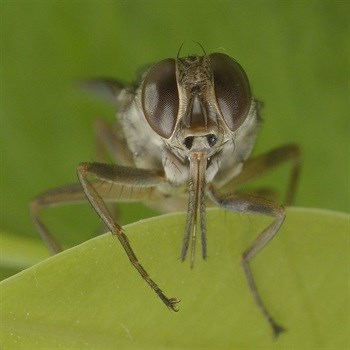Radiation tech bears fruit as Zanzibar declared tsetse free

A statement from the African Chapter for the State Atomic Energy Corporation (ROSATOM) made available through its South-Africa based Press Secretary, Ryan Collyer, indicates that tsetse flies have been killing more than three million livestock in sub-Saharan Africa region, Tanzania included, but the Isles have already been declared 'tsetse fly free area.'
Tanzania with about 21.3 million cattle, 15.2 million goats and 6.4 million sheep, or about 43 million livestock, is third in Africa after Sudan and Ethiopia in having the highest number of kept animals on the continent.
All these are being threatened by tsetse flies. "For decades, African nations have suffered the devastating consequences caused by the tsetse fly. According to the United Nations (UN) Food and Agriculture Organisation, the bloodsucking insects kill more than three million head of livestock in sub-Saharan Africa every year, causing losses amounting to $4bn dollars annually," Collyer maintains.
Radiation technology an effective remedy
According to the ROSATOM report, however, during the last ten years, the situation has been drastically improved, because scientists have discovered an effective remedy through radiation.
"With the help of nuclear technologies, African countries are now winning the battle against the livestock menacing flies. The Tanzanian islands of Zanzibar were among pioneers to successfully use radiation against the tsetse fly," reads part of the report, adding that the Isles are now a proper area for breeding dairy cattle should anyone feel like making highly paying investments in the archipelagos.
That is done through the nuclear-based sterile insect technique (SIT) that played a fundamental role in achieving the total eradication of the tsetse fly population. SIT is a form of insect pest control that involves the mass-breeding and sterilisation of male tsetse flies using ionising radiation in special rearing facilities. The sterile males are released systematically from the ground or by air in tsetse infested areas, where they mate with wild females, which do not subsequently produce offspring.
Improved socioeconomic conditions
Scientists believe that the results of nuclear technique employment are incredibly effective and thus through the eradication of the tsetse fly, socioeconomic conditions have dramatically improved.
"Since 2014, socioeconomic studies have shown that the total number of all cattle breeds have increased by roughly 38 percent. These figures are truly impressive, as most rural households earn more than 20 percent of their total income from the livestock business."
According to the report, milk production has nearly doubled from 4.6 to 10 litres per cattle a day, after the introduction of nuclear-based techniques.
Radiation has proved to be an effective solution for the eradication of many infectious insects on almost every continent on earth. SIT has been applied to hundreds of species of fruit flies, moths, mosquitoes and screwworm flies. By implementing the same methods, Senegal has in four years declared some of its regions totally tsetse free.
Ethiopia has also chosen this option, which has already helped to bring down the fly population by 90 percent.